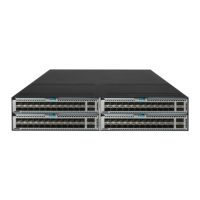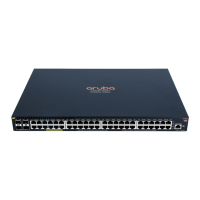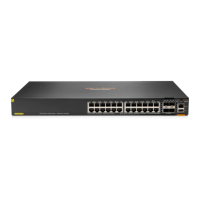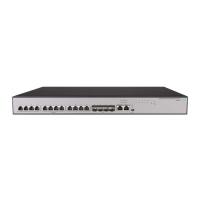400
Step Command Remarks
7. Redistribute VPN routes.
import-route
protocol
[ { process-id |
all-processes
}
[
allow-direct
|
med
med-value |
route-policy
route-policy-name ]
* ]
By default, no routes are
redistributed into BGP.
588BConfiguring IBGP between an MCE and a PE
Step Command Remarks
1. Enter system view.
system-view
N/A
2. Enter BGP instance
view.
bgp
as-number [
instance
instance-name ]
[
multi-session-thread
]
By default, BGP is not
enabled.
3. Enter BGP-VPN
instance view.
ip vpn-instance
vpn-instance-name N/A
4. Configure the PE as an
IBGP peer.
peer
{ group-name | ipv6-address
[ prefix-length ] }
as-number
as-number
By default, no BGP peers or
peer groups exist.
5. Enter BGP-VPN IPv6
unicast address family
view.
address-family ipv6
[
unicast
]
N/A
6. Enable BGP to
exchange IPv6 unicast
routes with the peer.
peer
{ group-name | ipv6-address
[ prefix-length ] }
enable
By default, BGP does not
exchange IPv6 unicast routes
with any peer.
7. Redistribute the VPN
routes of the VPN site.
import-route
protocol [ { process-id |
all-processes
} [
allow-direct
|
med
med-value |
route-policy
route-policy-name ] * ]
By default, no routes are
redistributed into BGP.
130B
Displaying and maintaining IPv6 MCE
Execute display commands in any view.
Task Command
Display VPN instance information.
display ip vpn-instance
[
instance-name
vpn-instance-name ]
For commands that display routing tables for VPN instances, see Layer 3—IP Routing Command
Reference.
131B
IPv6 MCE configuration example
310BNetwork requirements
As shown in 882HFigure 98, RIPng runs in VPN 2. Configure the MCE device to separate routes from
different VPNs and advertise VPN routes to PE 1 through OSPFv3.

